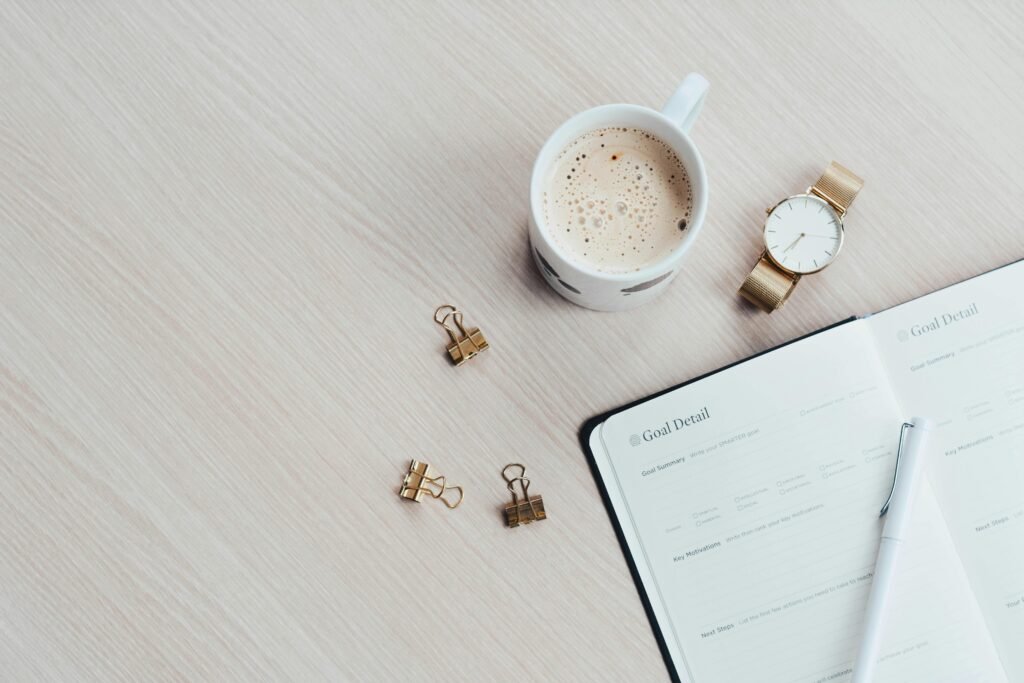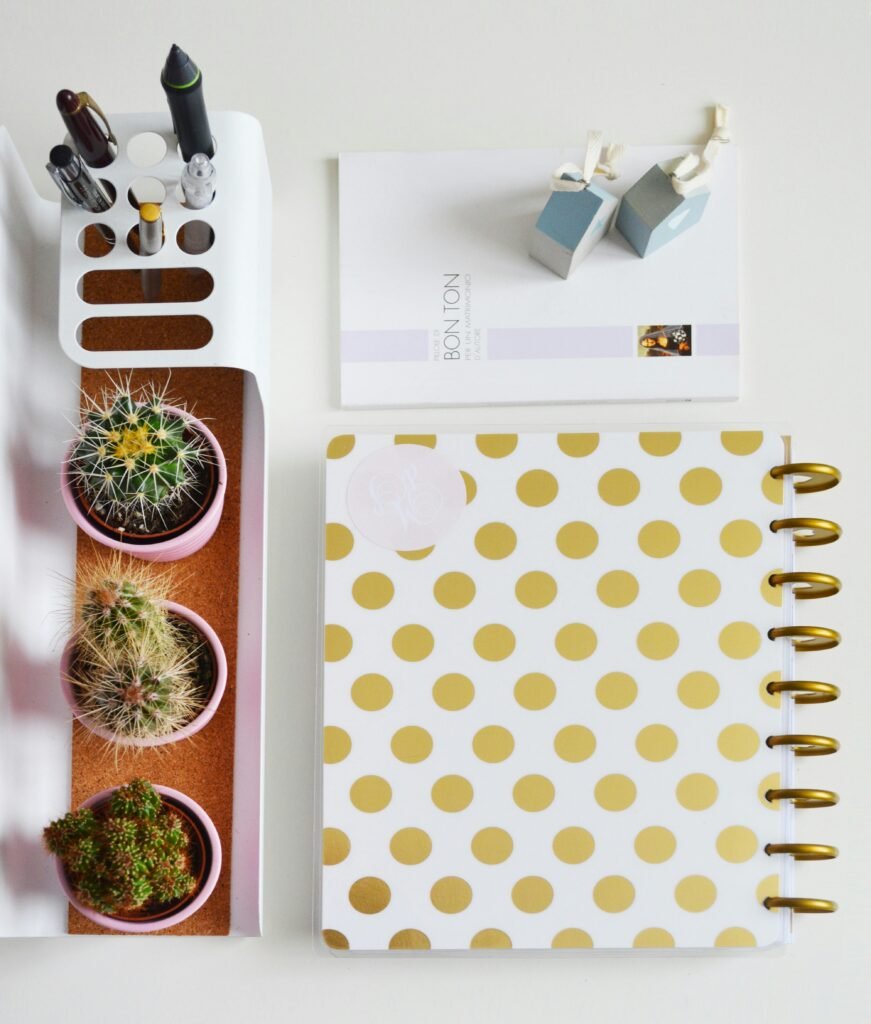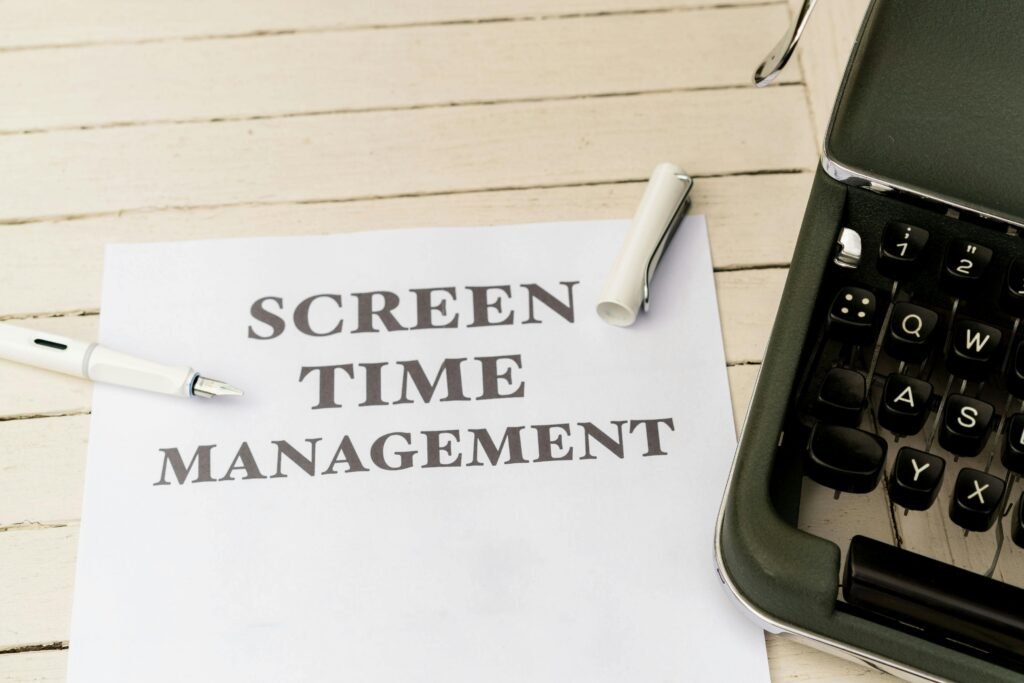Ever feel overwhelmed by the physical and mental clutter taking over your life?

The Impact of Clutter
Not only does physical clutter contribute to feelings of stress and overwhelm, but it also hinders productivity and creativity. Yes, it affects and contributes to your mental clutter. Luckily, there are practical strategies you can implement to declutter your mental and physical space and create a more harmonious living environment.
Physical Clutter and Mental Clutter
Physical clutter directly affects our mental well-being. When our space is messy, it’s challenging to concentrate and think clearly. We get easily distracted by the things we see around us, which prevent us from relaxing and finding peace. Constant mental clutter can cause higher levels of stress, anxiety, and even depression.
On the flip side, clearing out our physical space allows us to take charge of our surroundings. By simplifying our environment, we create a sense of tranquility and peace that also affects our mindset. When there’s less mess and more organization, our brains work better, we make smarter decisions, and we feel better overall.
Practical Strategies for Ending Physical Clutter
Decluttering doesn’t have to be a daunting task. With the right approach, you can transform your space and your state of mind. Here are some practical strategies to get you started:
Start Small
With decluttering, it’s important not to overwhelm yourself by trying to tackle the entire house or space all at once. Instead, break it down into smaller, more manageable tasks. This approach not only prevents you from feeling overwhelmed but also allows you to experience a sense of accomplishment along the way, which can be highly motivating.
Tips for Tackling Physical Clutter
Here are some tips for starting small:
- Choose a specific area: Begin with a single drawer, a shelf, or even just a corner of a room. By focusing on one small area at a time, you can give it your full attention and make meaningful progress.
- Set achievable goals: Before diving in, take a moment to assess the area you’ve chosen and set realistic goals for what you want to achieve. What do you want this space to look like? How do you want it to function? Having a clear vision will help guide your decision-making process as you declutter.
- Create categories: As you sort through your belongings, create categories based on what you find. So, let’s say you’re cleaning out a drawer. You could have categories like “keep,” “donate,” and “toss.”
- Take it one item at a time: To avoid feeling overwhelmed, focus on one item at a time. Pick up an object and ask yourself if it brings joy or serves a purpose in your life. If not, decide whether to keep, donate, or discard it. Repeat this process for each item in the area you’re decluttering.
- Celebrate mini victories: Remember that decluttering is not an all-or-nothing endeavor. Each small step forward is progress towards your goal of creating a harmonious living environment. Take the time to acknowledge and celebrate your achievements along the way. Reward yourself with a break, a cup of tea, or whatever brings you joy and motivates you to keep going.
By starting small and gradually working your way through different areas of your space, you can avoid feeling overwhelmed and maintain a steady momentum.
Remember, even the smallest actions can have a big impact on creating a clutter-free and peaceful environment.

Create a Plan: Eliminate Physical Clutter
To start your decluttering journey, it’s important to create a plan. This will help you stay organized, focused, and motivated throughout the process.
Here’s how to go about it:
- Take a moment to assess your space and identify the areas that need the most decluttering. It could be your bedroom, kitchen, or home office. For me, it was my closet. It was robbing me of my inner peace.
- Once you have listed the areas that require attention, prioritize them based on urgency or preference. Maybe you want to start with your bedroom because it’s the space where you spend most of your time or tackle the kitchen first because it’s been causing you stress lately. By setting priorities, you can approach decluttering systematically.
- Break down each area into smaller tasks and set achievable goals for each session. For example, if you’re decluttering your bedroom, you could set a goal to organize your closet one day and tidy up your bedside table the next. These smaller goals are more manageable and will give you a sense of accomplishment as you tick them off your list.
- Keep your plan simple and concise so that it doesn’t become overwhelming itself. You can use a notebook, a digital planner, or even create a checklist on your phone. The idea is to have a visual representation of your plan that you can refer to whenever you need guidance or motivation.
Having a plan in place will give you direction and structure as you clear space. It will also help you stay on track and avoid feeling overwhelmed by the task at hand. So take a few moments to create your plan and get started on creating a clutter-free and peaceful environment.
Divide and Conquer
Break down larger spaces into smaller sections. This approach prevents you from feeling overwhelmed and allows you to make steady progress. Here are some tips to help you divide and conquer your decluttering project:
Categorize the Physical Clutter
Start by categorizing your belongings.For example, if you’re decluttering your closet, focus on one category at a time, such as shoes or accessories.By breaking down the space into smaller sections, you can give each category your full attention.
Sort and Prioritize
Once you’ve identified a specific category, begin sorting through the items within that category.
Ask yourself questions like:
- Do I use this item regularly?
- Does it hold sentimental value?Is it still in good condition?
Based on your answers, prioritize which items to keep, donate or sell, and discard.
Create Zones
Within each category, create designated zones for unique items.
For example, in your closet, you can have separate zones for dresses, shirts, pants, and so on. I color coordinated my closet during my decluttering. This will make it easier for me to find what I need.
Set Realistic Goals
Break down each zone into smaller tasks and set achievable goals for each session. For instance, if you’re decluttering your bedroom closet, you could set a goal to organize your shoe collection one day and sort through your accessories the next.
These smaller goals are more manageable and will give you a sense of accomplishment as you tick them off your list.
The key is to approach decluttering systematically by dividing larger spaces into smaller sections. This strategy not only helps prevent overwhelm but also allows for steady progress towards creating a clutter-free environment. So divide and conquer!
Sort and Purge Physical Clutter
Begin the decluttering process by sorting your belongings into categories: keep, donate/sell, and discard. This will help you make simple decisions about what items to keep and what to let go of.
When deciding whether to keep something, ask yourself if it serves a purpose or brings you joy. If an item doesn’t meet either of these criteria, it’s time to say goodbye. Be ruthless in your decision-making process. It’s difficult to let go of certain items, but decluttering is about creating a space that supports your well-being and mental clarity.
Organize and Optimize
Once you have decluttered and purged, it’s time to organize the items you have kept. This step is crucial for maintaining order in the long run. Invest in storage solutions that maximize space and make it easy to find what you need.
Consider using bins, shelves, and drawer organizers to create a system that works for you.Labeling containers and shelves will help you quickly locate specific items. It also ensures that everything has a designated place, making it easier to maintain order.
When organizing, think about how often you use certain items. Place frequently used items within easy reach for convenience. Optimize your storage spaces by utilizing vertical space. Stackable containers and hanging organizers can help maximize storage capacity.
By following these steps, you can declutter your space effectively while creating an organized environment that supports your daily life.
And remember, decluttering is an ongoing process, so regularly assess your belongings and maintain the order you’ve created.
Guard Against Physical Clutter
Decluttering is an ongoing process, not a onetime event.Make regularly assessing your belongings and purging what no longer serves you a habit. By adopting a minimalist mindset and being intentional about what you bring into your space, you can prevent clutter from building up again.
Don’t forget, decluttering isn’t just about making things look nice. Physical organization will also help your mental clarity.
Now that we’ve covered physical clutter, let’s turn our attention to mental clutter.
Now that your physical space is under control, let’s focus on your mental clutter.

What is Mental Clutter?
Mental clutter is like having browser tabs open in your mind, all competing for your attention at once. It’s that feeling of your thoughts being scattered, jumbled, and disorganized.
You know when you walk into a room and can’t remember why you’re there? That’s mental clutter at work.
It’s the constant buzz of unfinished tasks, worries about the future, replays of past conversations, and random bits of information all swirling around in your head. Mental clutter makes it hard to focus, drains your energy, and can leave you feeling overwhelmed or stuck.
I like to think of mental clutter as the equivalent of a messy desk covered in stacks of paper, unopened mail, and sticky notes with half-formed ideas. Just like physical clutter can make it hard to find what you need, mental clutter makes it difficult to access your best thoughts and ideas when you need them most.
Below are some tips to tackle the mental clutter.
Practice Mindfulness
Take a few minutes each day to sit quietly and focus on your breath. This simple practice can help clear your mind and reduce stress. Notice any thoughts or emotions that arise, but don’t judge or attach to them. Instead, let them pass by like clouds in the sky.
Journal Your Thoughts
Writing your thoughts and feelings can be incredibly therapeutic. It helps you process emotions and gain clarity on what’s truly important. Set aside dedicated time each day to write in a journal or use a digital app to capture your thoughts.
You can also try different journaling techniques, like free writing or gratitude journaling.Organizing thoughts can improve your mental focus.
Exercise
Here’s an exercise to help you organize your thoughts and reduce mental clutter:
Step 1: Create Headings
Select Your Categories: On different journal pages, create separate headings for various aspects of your life. Examples include:
- Work
- Business
- Medical Appointments
- Bill Payments
- Personal Goals
Step 2: Brain Dump Under Each Heading
A brain dump is a technique where you write everything that comes to mind related to a specific category without filtering or editing. This process can help clear your mental space and identify priorities.
How to Execute the Brain Dump:
- Set a Timer: Allocate a specific amount of time (e.g., 5-10 minutes) for each section to keep the exercise focused.
- Write Freely: Under each heading, jot down every thought, task, or concern that arises. Don’t worry about grammar or structure—just let your ideas flow.
- For example, under “Work”:
- Finish project report
- Schedule team meeting
- Follow up with clients
Benefits of This Exercise
- Clarity: By externalizing your thoughts, you gain clarity on what needs attention.
- Prioritization: It helps in identifying urgent tasks versus long-term goals, allowing for better time management.
- Stress Reduction: Offloading thoughts onto paper can significantly reduce anxiety and overwhelm.
Using this structured approach not only promotes organization but also empowers you to take actionable steps towards managing your responsibilities effectively.
Establish Boundaries for Less Mental Clutter
In order to maintain mental clarity and protect your well-being, it is crucial to set boundaries in various aspects of your life. By learning to say no to activities and commitments that drain your energy, you can create a space that allows you to focus on what truly matters.
Identify Your Core Values
Start by identifying your core values – those principles and beliefs that are most important to you. This self-reflection will serve as a guide when deciding about how you spend your time and energy. Aligning your choices with your core values ensures you are investing in activities that bring fulfillment and satisfaction.
Prioritize for Greater Mental Focus and Less Mental Clutter
Once you have identified your core values, prioritize the activities and commitments that align with them. By doing so, you can ensure that you are dedicating time and mental space to the things that truly matter to you.
Consider creating a schedule or using productivity tools to help you stay organized and focused on these priorities.
Learn to Say No
One of the most empowering ways to set boundaries is by learning to say no. It’s important to recognize that saying no does not mean being selfish; rather, it means valuing your own well-being and respecting your limits.
Assess each request or opportunity that comes your way and consider whether it aligns with your priorities and contributes positively to your mental clarity. If it doesn’t, don’t be afraid to decline.
Protect Your Time and Mental Space
Protecting your time and mental space is essential for maintaining mental clarity. This means being mindful of how much time you spend on activities that do not contribute positively to your well-being.
Limit distractions from technology, such as social media or excessive email checking, during designated times or days when you disconnect from the digital world. Instead, engage in activities that bring you joy or promote relaxation, such as reading a book, going for a walk in nature, or spending quality time with loved ones.
Embrace Productivity Tools
Productivity tools can be valuable assets in setting boundaries and staying organized. Explore different tools and find ones that work for you, whether it’s a digital calendar, task management app, or time-tracking tool.
These tools can help you allocate your time effectively and ensure that you are dedicating sufficient mental space to your priorities. By setting boundaries and prioritizing what matters most to you, you create an environment that supports mental clarity and overall well-being.
Remember, it’s okay to say no and protect your time and mental space. Doing so allows you to focus on the activities that bring you joy and fulfillment while maintaining a sense of balance in your life.
Digital Detox

In today’s digital world, it’s easy to get overwhelmed by constant notifications and information overload. Take regular breaks from technology by implementing a digital detox.
Designate specific times or days when you disconnect from emails, social media, and other online distractions. Instead, engage in activities that bring you joy or promote relaxation, such as reading a book, going for a walk in nature, or spending quality time with loved ones.
Cultivate Gratitude to Cut the Mental Clutter
Take time each day to reflect on the things you are grateful for. Practicing gratitude can shift your focus from what’s cluttering your mind to the positive aspects of your life. Write three things you are grateful for each day or create a gratitude jar where you can collect notes about the things that bring you joy and appreciation.
Practice Self-Compassion for Inner Peace
Be kind to yourself and cultivate self-compassion. Acknowledge that everyone makes mistakes and experiences challenges. Treat yourself with the same kindness and understanding that you would offer to a friend.
Practice self-care activities that nurture your physical, emotional, and mental well-being, such as taking a bath, meditating, or enjoying a hobby.
By incorporating these mental decluttering tips into your daily routine, you can create a clearer and more focused mind.
Last, recognize that mental and physical decluttering is a practice that is never-ending, so be patient with yourself and make it a priority to assess and declutter your space and your thoughts regularly.
Wrap-Up
As we wrap up our examination of physical and mental clutter, it becomes clear that there is a close link between our surroundings and our thoughts. Cleaning up your space can help clear your mind, and organizing your thoughts can inspire you to tidy up your home. It’s a helpful cycle that can lead to more focus and calm in your life.
Don’t worry about being perfect. You don’t need a spotless house or a completely quiet mind to see benefits. Even minor improvements can make a big difference in how you feel overall.
Next time you’re feeling overwhelmed, try this simple exercise: Take a deep breath, look around, and ask yourself, “What’s one small thing I can organize or let go of right now?” It might be something in your room that’s been bothering you, or a worry you’ve been carrying around.
By taking care of both your physical space and your mental space, you’re not just cleaning up. You’re making room for new ideas and a greater sense of peace. In today’s busy world, that’s a valuable skill to have.
So, what will you tackle first? Remember, every small step counts.
You’ve got this!




